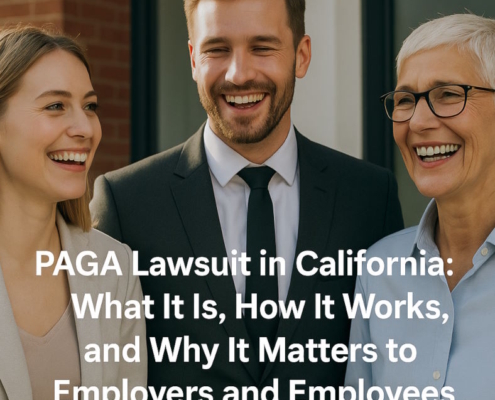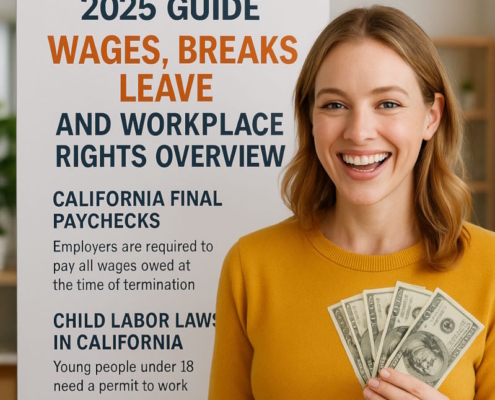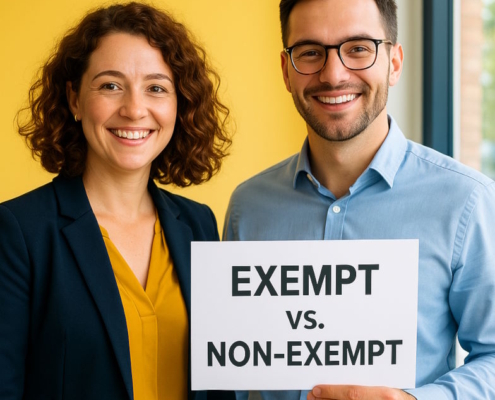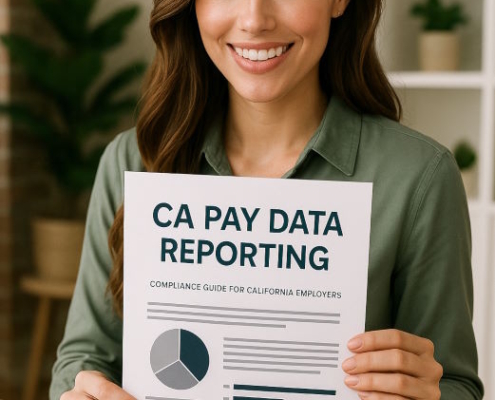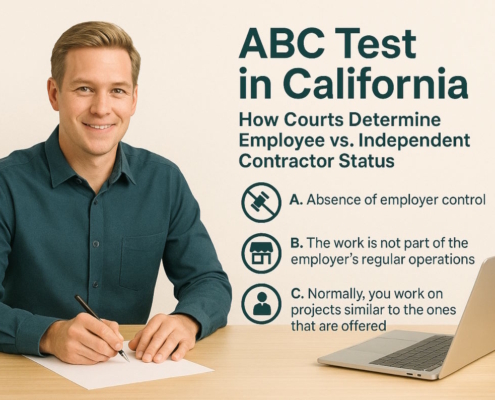13 Wrongful Termination Examples
Brad Nakase, Attorney
Email | Tel 888-600-8654
State and Federal wrongful termination law gives employees the right to sue their former employers if they are unjustly laid off or fired from their job for an illegal reason, such as discrimination. A wrongful termination example is when an employee reports sexual harassment to management or HR and is fired shortly after making the claim. In this article, our employment attorney will provide common wrongful termination examples as follows:
1. Discrimination
An employee can sue an employer for wrongful termination if you were fired for reasons that violate anti-discrimination and whistleblower statutes. Based on California’s FEHA, no employer is ever allowed to terminate an employee based on these specific characteristics:
- Genetic information
- Marital status
- Religion
- Race, Ancestry, Color, National Origin
- Sex (Childbirth, Pregnancy, Related Medical Issues)
- Physical or Mental Disability
- Marital Status
- Sexual Orientation
- Age
- Military or Veteran Status
- Political Affiliations or Actions
- Being a Victim of Domestic Violence, Stalking, Assault, or Similar
- HIV/AIDS
- Medical Conditions (Various)
The above wrongful termination examples is not exhaustive. If an employee within the state of California believes that their firing was motivated by any of these conditions, characteristics, or choices, then they may have been a victim of illegal discrimination. There may be a case to be made for wrongful termination based on these grounds.
Employers, on the other hand, are simply not permitted to create and sustain a workplace environment that purposefully harasses, excludes, persecutes, or places any member at a specific disadvantage—especially if they fit into any of the above categories. When a worker is made to quit because she/he could not put up with a hostile work environment where a protected group was being unfairly targeted, this is called a constructive discharge. Although employees can sue for wrongful termination on the basis of constructive discharge, it is not easy. Workers can sue for wrongful termination when they have been fired or laid off from their job for an illegal reason, such as discrimination.
2. Whistleblower Retaliation
Whistleblowing is the lawful disclosure of information a discloser reasonably believes evidence of wrongdoing to an authorized recipient. For example, a whistleblower is a person, often an employee, who reports corruption, abuse, fraud, waste, or dangers to public health and safety. An employer cannot retaliate against you for exercising your rights under the Department of Labor’s whistleblower protection laws. If you have been fired for whistleblowing, you can speak with an employment lawyer who will advise you on a wrongful termination claim.
3. Sexual Harassment
Wrongful termination occurs when an employee is fired for refusing sexual advances or complaining to HR or EEOC about sexual harassment. Sexual harassment is a broad term including many unwelcome physical and verbal sexual comments without the victim’s consent. Sexual harassment wrongful termination examples include unwelcome sexual advances, requests for sexual favors, and other verbal or physical conduct or communications of a sexual nature. When an employer terminates a worker based on allegations of sexual harassment, it is a wrongful termination. That employer is always liable for a hostile work environment created by other employees. If you believe you have been sexually harassed at work and wrongfully discharged, you may file a wrongful termination lawsuit to seek damages.
4. Racial Discrimination
In many cases, wrongful termination occurs due to discrimination or harassment in the workplace. Race discrimination involves treating someone (an applicant or employee) unfavorably because they are of a certain race. In its most overt form, racial discrimination can occur due to stereotyping, prejudice and bias. Racial and ethnic discrimination occurs daily, hindering progress for millions of people around the world. Racial discrimination wrongful termination examples include a company intentionally treats you differently based on your race, ethnicity, or national origin. An employment policy or practice that applies to everyone, regardless of race or color, can be illegal if it hurts the employment of people of a particular race or color. If you believe you have been discriminated against in employment, you may file a lawsuit for wrongful discharge to seek damages.
5. Gender Discrimination
In many cases, wrongful termination occurs due to gender discrimination or harassment in the workplace. Gender discrimination in the workplace happens when an employee is treated differently because of gender. If your employer specifically told you that you were being let go because of your sex or gender, this qualifies as wrongful termination. Title VII of the Civil Rights Act of 1964 prohibits employers from discriminating in work privileges, employment benefits, conditions, or terms based on sex or gender. Some common examples of gender discrimination wrongful termination include lower wages than the opposite sex, unfair treatment, or failure to promote based on your gender. Terminating an employee based on gender is a type of prohibited conduct under this law. You may have a valid wrongful termination claim if you suspect your employer fired you due to gender or sexul discrimination.
6. Age Discrimination
States and federal law prohibits employers from firing employees solely based on age. The federal Age Discrimination in Employment Act protects applicants and employees 40 years old or older from discrimination based on ageism in the workplace. Under the ADEA, age discrimination wrongful termination examples include discriminating against any worker age 40 or older because of their age concerning recruiting, employing, job assignment, benefits, compensation, layoff, or promotion. Additionally, workers cannot be retaliated against for opposing age discrimination or filing an age discrimination claim.
7. FMLA Violations
If your employer wrongfully terminates you for taking medical leave, you could have a lawsuit against them. The FMLA prohibits employers from terminating an employee simply for taking a break under the parameters of the FMLA. The FMLA is a federal law that allows eligible employees of covered employers to take unpaid, job-protected leave. The law enables employees to file suit if they feel discriminated against or suffered wrongful termination because they requested FMLA leave.
8. Immigration Status
California laws protect workers when they are mistreated based solely on their immigration status. This means that immigrant workers are protected from unlawful discrimination, harassment, wrongful termination and other workplace violations. Undocumented immigrants in California also are able to access some protections. The following are wrongful termination examples relating to a worker’s immigration status:
- Asking to examine any documents that are not already required by the US government
- Asking needless questions about an individual’s immigration status
- Asking to see paperwork/documentation in an abusive manner
California wrongful termination law makes it unlawful employers from retaliating against workers with immigration-related threats. When an employer discharges an employees on the basis of immigration, it is a good example to sue for wrongful termination in California.
9. Public Policy Violations
An action for wrongful termination (or discharge) in violation of public policy gives a terminated employee the right to action against their former employer. In California employment laws, wrongful termination in violation of public policy occurs when an employer fires an employee for exercising a legal right or performing a legal obligation. Unlike wrongful termination actions based on contracts, wrongful termination in violation of public policy is largely a court-created doctrine.
Basically, employers cannot lay off employees if the reason for the firing violates a state or federal policy. Fundamental public policies, whether at the state or federal level, exist for a reason, and their reach extends into the employment sphere. Public policy wrongful termination examples include:
- When a worker is fired for refusing to do something illegal, such as participate in insider trading;
- A worker rightfully protests the illicit or fraudulent practice of their company; and
- An employer asks the worker to lie to the IRS, and he/she refuses and is fired.
This would be an opportunity to speak with an attorney about making a public policy claim because the employee would have been wrongfully discharged.
For “At-Will” employees, public policy claims provide an important exception. This is because the reason for termination might violate a public policy, on a federal or state level, while at the same time not technically defying an employment law. A worker can sue for wrongful termination in California because no worker should lose their job for the just refusal to do something illegal.
10. Retaliation
Employees who report their employer’s potentially illegal behavior are protected against retaliation and wrongful termination. A retaliatory discharge is unlawful because it is considered wrongful termination. For example, when employees report their employer’s potentially illegal behavior, they are protected against retaliation and wrongful termination. Retaliatory wrongful termination examples are:
- Taking maternity leave
- Reporting illegal discrimination or harassment or filing a complaint
- Complaining to the employer about unlawful working conditions
- Reporting a health/safety issue to a government agency
- Reporting unlawful hour and wage practices (unpaid OT, for ex.)
- Asking for time off to vote/serve for jury duty
- Asking for or taking medical leave
- Filing a claim for worker’s compensation
- Complaining about wages yet unpaid, discussing income issues with fellow employees
- Asking to take lactation breaks during the workday
A retaliatory discharge termination is illegal.
11. Political Affiliations, Connections, and Interests
States and federal law forbids employers from retaliating against workers based on their political activities or views. Four wrongful termination examples for protected political activities includes:
- Attending rallies
- Campaigning for their candidate
- Running for office
- Being or becoming a member of a political party
Likewise, businesses cannot force, instruct, or attempt to coerce their employees into certain belief systems, such as adhering to company politics. They also cannot retaliate against employees who believe in opposing political ideologies. For example, if an employee supports or votes for a candidate that the employer does not approve of, they cannot threaten them or take any other action—including termination.
It is sometimes difficult to differentiate between a business’s “brand” and political opinion. Workers fired for political reasons may sue for wrongful termination in California because employers have no say in what their workers believe politically or whom they endorse and vote for.
12. Breach of Employment Contract
Where an employment contract requires termination only for cause, a terminated employee can sue for arbitrary discharge. Essentially, if a worker received a contract when their position began, it probably stipulated the length of time of employment. If your employer breaches your employment contract, you can collect money damages for your financial losses.
A contract can be verbal as long as it is fully comprehended by both parties involved. For example, a supervisor could tell an employee that they “will not be fired if they do a good job” and perhaps quantify what is meant by a good job. Understandably, oral contracts are difficult to certify and prove, so we always recommend written documentation at all times—for employees and employers.
Wrongful termination examples can be based on an “implied contract.” What is an implied contract? An employer could include in the employee handbook a list of reasons why workers could be fired.
Have a quick question? We answered nearly 2000 FAQs.
See all blogs: Business | Corporate | Employment Law
Most recent blogs:
Contact our attorney.





















